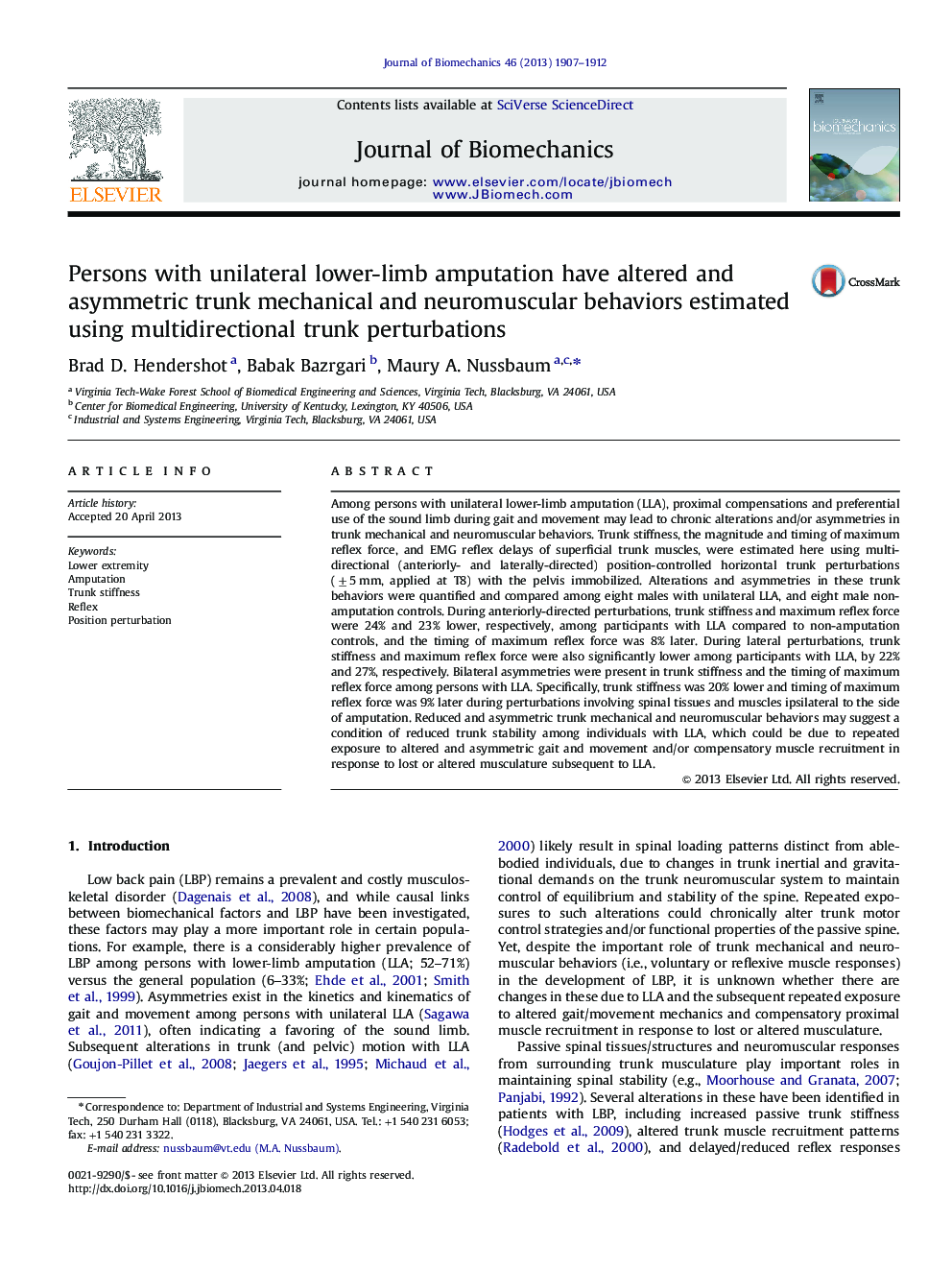| کد مقاله | کد نشریه | سال انتشار | مقاله انگلیسی | نسخه تمام متن |
|---|---|---|---|---|
| 10432764 | 910258 | 2013 | 6 صفحه PDF | دانلود رایگان |
عنوان انگلیسی مقاله ISI
Persons with unilateral lower-limb amputation have altered and asymmetric trunk mechanical and neuromuscular behaviors estimated using multidirectional trunk perturbations
ترجمه فارسی عنوان
افراد مبتلا به آمپوتاسیون اندام تحتانی یکطرفه رفتارهای مکانیکی و عصبی عضلانی تنه و غیرمستقیم را با استفاده از اختلالات تنه چند جهته برآورد می کنند
دانلود مقاله + سفارش ترجمه
دانلود مقاله ISI انگلیسی
رایگان برای ایرانیان
کلمات کلیدی
اندام تحتانی، قطع سختی تنه رفلکس، اختلال در موقعیت،
موضوعات مرتبط
مهندسی و علوم پایه
سایر رشته های مهندسی
مهندسی پزشکی
چکیده انگلیسی
Among persons with unilateral lower-limb amputation (LLA), proximal compensations and preferential use of the sound limb during gait and movement may lead to chronic alterations and/or asymmetries in trunk mechanical and neuromuscular behaviors. Trunk stiffness, the magnitude and timing of maximum reflex force, and EMG reflex delays of superficial trunk muscles, were estimated here using multidirectional (anteriorly- and laterally-directed) position-controlled horizontal trunk perturbations (±5 mm, applied at T8) with the pelvis immobilized. Alterations and asymmetries in these trunk behaviors were quantified and compared among eight males with unilateral LLA, and eight male non-amputation controls. During anteriorly-directed perturbations, trunk stiffness and maximum reflex force were 24% and 23% lower, respectively, among participants with LLA compared to non-amputation controls, and the timing of maximum reflex force was 8% later. During lateral perturbations, trunk stiffness and maximum reflex force were also significantly lower among participants with LLA, by 22% and 27%, respectively. Bilateral asymmetries were present in trunk stiffness and the timing of maximum reflex force among persons with LLA. Specifically, trunk stiffness was 20% lower and timing of maximum reflex force was 9% later during perturbations involving spinal tissues and muscles ipsilateral to the side of amputation. Reduced and asymmetric trunk mechanical and neuromuscular behaviors may suggest a condition of reduced trunk stability among individuals with LLA, which could be due to repeated exposure to altered and asymmetric gait and movement and/or compensatory muscle recruitment in response to lost or altered musculature subsequent to LLA.
ناشر
Database: Elsevier - ScienceDirect (ساینس دایرکت)
Journal: Journal of Biomechanics - Volume 46, Issue 11, 26 July 2013, Pages 1907-1912
Journal: Journal of Biomechanics - Volume 46, Issue 11, 26 July 2013, Pages 1907-1912
نویسندگان
Brad D. Hendershot, Babak Bazrgari, Maury A. Nussbaum,
